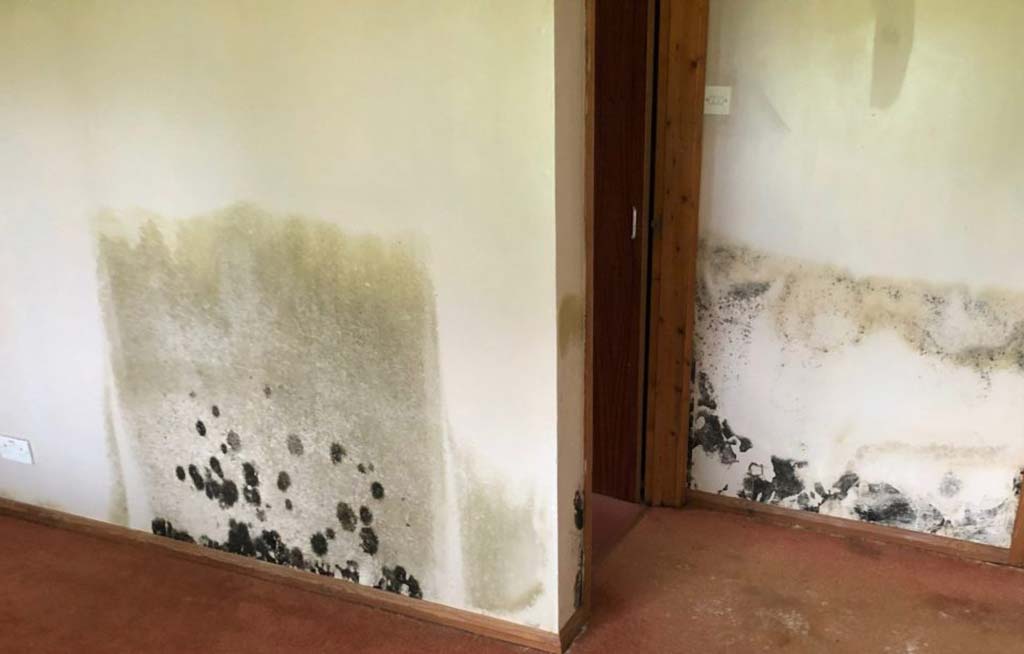
Property Damp Surveys
Many homes in the UK suffer from problems with moisture problems like rising damp and unless it is treated it can only get worse and may cause serious damage which can spread throughout the house.
It is estimated that 4% of UK properties suffer from some kind of damp problem so this is an issue that should not be neglected or put off to a later date. Homes in this category are often beside a river, stream or are coastal properties.
A damp survey is an assessment of moisture in your property carried out by a specialist who is trained to find any problem areas and can advise you how much it will cost to correct any problem. The survey specifically reports on areas in the property where damp could be present.
The surveyor may find small spots of damp and mould on a ceiling and this could be due to something as simple as a loose roof tile or inadequate ventilation. Alternatively, damp could be a real problem causing loose plaster or rotting roof timbers.
Getting a damp survey will reveal any small or large damp problems.

What Kind Of Damp Problems Could There Be with A Property?
There are three different kinds of damp that can cause damage to a property.
Rising Damp
If the house does not have a damp course there can be rising damp. This can be expensive to correct. This is a common problem in sandstone houses in the UK, due to the porous nature of the stone, and even Georgian houses and Edwardian homes.
Properties built after 1875 will usually have a damp course but older properties probably won’t have one. It might be that there is a damp course but it is damaged and getting a damp survey will reveal the exact nature of the problem.
Condensation Problems
Condensation caused by poor or inadequate ventilation can cause problems with damp. This is the easiest type of damp to fix and does not necessarily require an expert.
Simple steps like opening windows, fitting air bricks and air vents or roof ventilation tiles will help to prevent a build up of condensation in the home.
Of course, these measure can result in a loss of heat so getting expert advice is still a good idea. The main areas for condensation are kitchens and bathrooms so plan to tackle these rooms first.
Penetrating Damp
Getting rid of penetrating damp caused by leaking or wet walls can be tricky so a professional will be the best person to go to for advice.
Poorly fitting windows or broken guttering can cause penetrating damp as can old porous bricks. There may be a problem with the cavity wall and a damp survey by an expert will be able to identify exactly where the fault lies.

How Long Does A Damp Survey Take?
Although most damp surveys can be completed within three or four hours, it may take longer for the surveyor to establish the exact cause of the problem. The time taken also depends upon the size of the property and the degree of the damp problem.
The surveyor will ask some questions about the history of the property and then go on to locate the underlying cause of the damp. Specialist equipment and examination of the areas of damp will help the property surveyor to complete the report.
What Does A Damp Survey Show?
A damp report is simple and will point out the areas that have been inspected and any defects that are the cause of the damp issue. Any missing roof tiles or damage to the external area of the property will be included in the property survey report.
It will also show if there are any gaps around windows or damaged flashing. Any damp caused at ground level will be shown and the report will offer solutions and potential costs for rectifying the problem.
What Can Be Done About Rising Damp?
If you do have a problem with rising damp in your property, there are a few ways this can be dealt with. You can treat rising damp in an old house by trying one of the following solutions:
Pour a plinth around your property
A plinth around a property is basically a concrete barrier between the house and the ground outside. This is particularly useful if you have rising damp in an old house which is coming from the outside, such as from a hill behind the house.
A plinth usually consists of a concrete step around 10 inches wide and usually around 12-24 inches deep. In order to stop the dampness, a ditch has to be dig around the house, preferably as close to the base of the wall as possible.
Concrete containing waterproofer is poured and once dry, this forms a physical barrier between the house and the damp ground outside. This type of solution to get rid of damp is common in rural properties in Scotland and remote properties in Wales.

Install a damp proof membrane or damp course
Another solution to get rid of dampness in walls, particularly if you have damp in an old house, is to install a damp proof membrane, sometimes known as a damp course, around the walls of the property.
This involves cutting a slice into the walls all around the house and inserting a damp proof membrane or damp course to stop the moisture from rising up the walls.
How to get rid of damp on walls
if the dampness problem in your house is actually on the walls, meaning not at the base of the wall but creeping up the wall, you must eliminate the cause of the problem.
Damp on walls almost always rises from the bottom up, hence the term rising damp, but the only way you will ever really get rid of damp on walls is to address the main dampness problem.
As mentioned above, a simply installation of a concrete plinth or damp course can solve dampness problems in most older homes.
You can also opt to inject water-repelling chemicals into the base of the house or have the base of the house re-plastered with waterproof external plaster. This is particularly useful in older houses built from bricks.

How Much Does A Damp Survey Cost?
A dampness report on a typical 3 bedroom detached house can cost upwards of £150. The cost rises if the property is a lot larger and costs can also depend upon the location.
You will be paying for the advice of a qualified damp surveyor but bear in mind that the cost of a property survey can be minimal compared to the cost of rectifying severe damp damage further along the line.
What Kinds Of Properties Need A Survey?
Any property that has not been maintained properly can suffer from damp problems. If a property does not have a damp course or has obvious telltale signs of damp then it is a good idea to get a damp survey.
Left untreated damp not only causes damage to a property but can be hazardous to health with bacteria and mould causing illness especially to anyone with a chest condition.
If you are buying an abandoned property for sale you should be on the lookout for damp problems as neglected properties or run-down houses are susceptible to dampness and moisture problems.

How Can I Tell If My Property Needs A Damp Survey?
It is easy to spot if your property is suffering from damp problems.
If you experience a musty smell or see any small spots of mildew or mould, these are sure signs of damp. Walls and floors that feel cold to the touch and any discoloured patches on walls are also indications of an imminent problem with damp.
If you have wallpaper and it starts to peel or if the windows are dripping with condensation, this is also a sign that the property is damp.
Back to UK Property Market Blog


